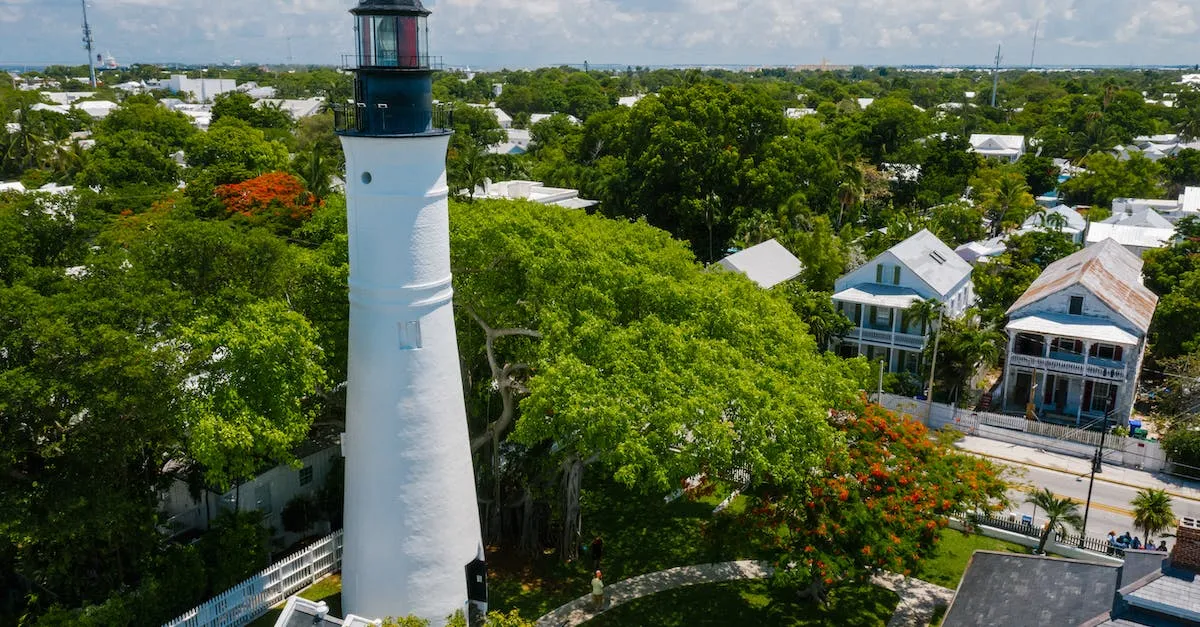Why Are Roofs So Expensive In Florida?
Installing a new roof or repairing roof damage in the Sunshine State often comes with sky-high price tags. If you’re a Florida homeowner faced with replacing your roof, you may be wondering why it costs so much compared to other states. In short, Florida’s unique climate, building codes, and insurance requirements create the perfect storm for costly roof replacements.
Factors Driving Up Florida Roofing Costs
Frequent hurricanes and storms
One of the primary factors driving up roofing costs in Florida is the region’s susceptibility to frequent hurricanes and storms. The state experiences a high number of hurricanes each year, which can cause significant damage to roofs.
The need for more durable and storm-resistant roofing materials, along with the increased demand for repairs and replacements after a storm, can contribute to higher costs.
Extreme heat and humidity
Florida’s hot and humid climate also plays a role in the high cost of roofing. The intense heat and humidity can cause materials to deteriorate more quickly, leading to more frequent repairs or replacements.
Additionally, the extreme weather conditions can make it more challenging for roofing contractors to work efficiently, increasing labor costs.
Stringent building codes
Florida has stringent building codes in place to ensure structures can withstand the region’s unique weather challenges. These codes require roofs to meet specific standards for wind resistance and impact resistance.
While these regulations are essential for the safety and durability of homes, they can drive up the cost of roofing materials and installation.
High insurance rates
Insurance rates in Florida can be significantly higher than in other states due to the increased risk of damage from hurricanes and storms. Homeowners often need to invest in comprehensive insurance policies to protect their property, including their roofs.
The higher insurance rates can indirectly contribute to the overall cost of roofing in the state.
Seasonal demand spikes
Florida experiences seasonal spikes in demand for roofing services, particularly during the hurricane season. The increased demand can lead to higher prices as roofing contractors have limited availability and can charge a premium for their services.
Homeowners may need to plan ahead and schedule roofing projects during the off-peak season to potentially save on costs.
Sales tax on materials
Another factor that contributes to the higher cost of roofing in Florida is the sales tax on materials. The state imposes sales tax on roofing materials, which can add a significant expense to the overall project cost.
Homeowners should consider this additional cost when budgeting for a new roof or repairs.
Roof Types Commonly Used in Florida
Asphalt shingles
One of the most popular roof types in Florida is asphalt shingles. These are made of a combination of asphalt and fiberglass, which makes them durable and resistant to harsh weather conditions. Asphalt shingles are lightweight, affordable, and come in a variety of colors and styles, making them a versatile choice for homeowners.
They are also relatively easy to install and maintain, making them a cost-effective option for many Florida residents.
Concrete tile
Concrete tile roofs are another common choice in Florida. These roofs are known for their durability and longevity, with some concrete tile roofs lasting upwards of 50 years. They are resistant to fire, wind, and pests, making them a popular choice for homeowners in the state.
Concrete tiles are available in a wide range of styles and colors, allowing homeowners to customize their roof to match the aesthetic of their home.
Metal roofs
Metal roofs have gained popularity in recent years due to their durability and energy efficiency. They are resistant to high winds, hail, and fire, making them an ideal choice for Florida’s unpredictable weather.
Additionally, metal roofs reflect heat, reducing energy consumption and cooling costs for homeowners. While metal roofs may have a higher upfront cost compared to other roof types, they often pay for themselves over time through energy savings.
Modified bitumen
Modified bitumen roofs are commonly used in Florida due to their ability to withstand high temperatures and intense sunlight. These roofs are made of asphalt and a rubber-like material, providing them with increased flexibility and durability.
Modified bitumen roofs are often used on flat or low-sloped roofs and are known for their long lifespan and resistance to water and UV rays.
Built-up roofs
Built-up roofs, also known as tar and gravel roofs, are a traditional roofing option that is still commonly used in Florida. These roofs consist of multiple layers of asphalt and felt, which are then topped with gravel or other materials.
Built-up roofs are known for their durability and ability to withstand harsh weather conditions. While they require regular maintenance and may have a higher initial cost, they can provide long-lasting protection for Florida homes.
Ways to Reduce Roofing Expenses in Florida
Roofing expenses in Florida can often be quite high due to the unique climate and weather conditions that the state experiences. However, there are several ways to reduce the cost of a new roof or roof repairs.
By implementing these strategies, homeowners can save money without compromising on the quality or durability of their roof.
Compare multiple quotes
One of the most effective ways to reduce roofing expenses in Florida is to compare multiple quotes from different roofing contractors. By obtaining several estimates, homeowners can get a better idea of the average cost and identify any outliers.
This will help them make an informed decision and choose a contractor that offers a fair price for the required work. It is important to ensure that the quotes include all the necessary materials and labor costs.
Offer insurance claim discounts
Florida is prone to hurricanes and strong storms, which can cause significant damage to roofs. Homeowners with insurance coverage should check if their policy covers roof repairs or replacements. In some cases, insurance companies may offer discounts or incentives for utilizing their approved contractors.
It is worth exploring this option to potentially reduce the overall cost of the roofing project.
Install during off-season
Roofing companies in Florida tend to be busier during certain times of the year, such as hurricane season. By scheduling roof installation or repairs during the off-season, homeowners may be able to negotiate lower prices.
Contractors are often looking for work during slower periods and may be more willing to offer discounts or promotional rates. Additionally, scheduling roofing work during a less busy time can also ensure faster completion and better attention to detail.
Choose longer-lasting materials
While the initial cost of high-quality roofing materials may be higher, they can save homeowners money in the long run. Investing in durable materials such as metal or tile roofs can significantly extend the lifespan of the roof, reducing the need for frequent repairs or replacements.
Homeowners should consider the long-term benefits when choosing roofing materials, as they can ultimately save both money and headaches in the future.
Negotiate warranty coverage
When discussing roofing projects with contractors, homeowners should inquire about warranty coverage. A comprehensive warranty can provide added protection and save money on potential repairs in the future.
It is recommended to negotiate warranty terms and coverage to ensure maximum benefits and minimize out-of-pocket expenses.
Ensure proper attic ventilation
Proper attic ventilation is crucial in Florida’s hot and humid climate. Inadequate ventilation can lead to increased energy costs and potential roof damage. By ensuring proper attic ventilation during the roof installation or repair process, homeowners can prevent moisture buildup, reduce the strain on the roof, and potentially extend its lifespan.
This proactive measure can save money on repairs and energy bills in the long run.
By implementing these strategies, homeowners in Florida can effectively reduce their roofing expenses without compromising on quality or durability. It is important to carefully consider all options, compare quotes, and choose a reputable contractor to ensure a successful and cost-effective roofing project.
Signs It’s Time for a New Florida Roof
Leakage or water damage inside
One of the most obvious signs that it’s time to replace your Florida roof is the presence of leakage or water damage inside your home. If you notice water stains on your ceiling or walls, or if you find puddles of water on your floor after a heavy rain, it’s a clear indication that your roof is no longer effectively keeping out water.
Ignoring this issue can lead to further damage to your home’s structure and belongings.
Roof over 10-15 years old
Age plays a significant role in the deterioration of roofs. In Florida’s harsh climate, where intense heat and hurricanes are common, roofs tend to have a shorter lifespan. If your roof is over 10-15 years old, it’s likely that it has already endured significant wear and tear.
Regular inspections and maintenance can extend the lifespan of your roof, but eventually, it will need to be replaced to ensure the safety and protection of your home.
Missing, cracked, curled shingles
Take a moment to inspect your roof from the ground. If you notice missing, cracked, or curled shingles, it’s a sign that your roof is deteriorating. Shingles play a crucial role in protecting your home from the elements, and when they start to show signs of damage, it’s an indication that they are no longer functioning as they should.
A compromised roof can lead to water infiltration and further damage.
Rust spots or exposed nail heads
Another sign that your Florida roof may need replacing is the presence of rust spots or exposed nail heads. Rust indicates that the metal components of your roof, such as flashing or gutters, are deteriorating.
Exposed nail heads can allow water to seep into your roof, causing damage to the underlying layers. These issues should be addressed promptly to prevent further deterioration and potential water damage.
Increased energy bills
If you’ve noticed a significant increase in your energy bills, it could be a sign that your roof is no longer providing adequate insulation. A deteriorating roof can allow air to escape, forcing your HVAC system to work harder to maintain a comfortable temperature.
This increased energy consumption not only affects your wallet but also indicates that your roof is no longer functioning as it should.
Remember, regular inspection and maintenance can help identify potential issues before they become major problems. It’s always a good idea to consult with a professional roofing contractor who can assess the condition of your roof and provide recommendations based on their expertise.
Conclusion
In summary, a combination of factors like extreme weather, strict building codes, and insurance costs drive up the price of roof replacements in Florida. While staying proactive with maintenance and smart installation decisions can help control costs, homeowners should be prepared for a sizable investment when reroofing due to the state’s unique climate challenges.








